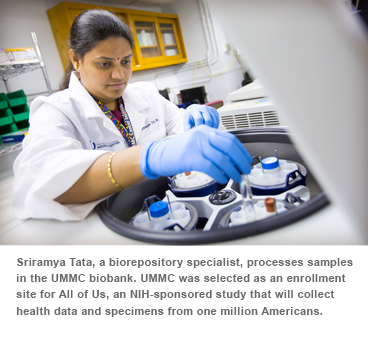Rocking Research at UMMC
Good morning!
Last night I had the opportunity to welcome fans of the storied rock band The Doobie Brothers to a sold-out Thalia Mara Hall in Jackson. The concert was a benefit for The MIND Center, one of our marquee research programs that is leading the nation in deciphering and one day helping prevent, treat and cure Alzheimer’s disease.
Supported by an energetic and passionate volunteer board, The MIND Center is among the many research programs that powered UMMC to a record 316 grants and awards in fiscal year 2017, the most ever for a single year. At $65.5 million, funding for the research mission last year was the fourth highest in UMMC history.
 With last year’s funding of several important research programs, new research facilities on the horizon, innovative training activities, and collaborations with partners like the Mayo Clinic, UMMC research is on the move and positioned for continued growth into the future.
With last year’s funding of several important research programs, new research facilities on the horizon, innovative training activities, and collaborations with partners like the Mayo Clinic, UMMC research is on the move and positioned for continued growth into the future.
Let’s look at some of the evidence:
- Last year saw our scientists attract several large program awards, including $19 million for applied research in obesity and $11 million to study threatening conditions in the mother or child that arise during pregnancy or immediately after birth.
- We are putting the finishing touches on a wonderful new asset, the Translational Research Center, set to open in November. The TRC will serve as a new home for The MIND Center and the UMMC Neuro Institute, and will offer incubator laboratory space for lease to some of our private sector partners.
- We are in the final planning stages of a new clinical trials unit on the seventh floor of University Hospital, with construction set to begin in 2018. Completion of the unit will greatly enhance our ability to offer novel therapeutics to our patients.
- As we expand our clinical research facilities, we are also building our expertise, with programs like the Master of Science in Clinical Investigation. Offered to clinical professionals with terminal degrees, the program has a larger-than-expected first cohort of seven clinician-scientists.
- Our work with the Mayo Clinic is advancing in many areas, most notably biobanking. We are participating with Mayo on the “10K Project,” collecting blood samples that will support our joint efforts in precision medicine, and we’ve just announced that UMMC is joining Mayo’s long-term population study of Alzheimer’s disease.
- UMMC has also been invited to join the “All of Us” precision medicine initiative, a broad-based effort of the National Institutes of Health to use the medical history and genetic profiles of one million Americans to better understand health and disease.
- UMMC’s research collaborations with faculty at Ole Miss continue to grow, and will receive a major boost with the announcement of the four intercampus Flagship Constellations initiatives later this fall.
- HumMod, a computer-based model of human physiology that has been developed and trademarked by Dr. Robert Hester, holds great promise to accelerate and lessen the cost of early-phase drug and device testing.
- Our scientists continue to garner international recognition for their work. In fact, Dr. Richard Roman, Billy S. Guyton Distinguished Professor and chair of pharmacology and toxicology, is in San Francisco receiving the 2017 Excellence Award for Hypertension Research at the American Heart Association’s Council on Hypertension Joint Scientific Sessions. Sponsored by Novartis, this prestigious honor recognizes scientists who have made groundbreaking contributions to hypertension research. Congratulations, Rich!
The vitality of our research activities pays dividends to UMMC beyond the research itself. Funds allocated for the indirect costs associated with research help us build our research infrastructure, including equipment and core facilities. This increases our capacity and competitiveness for additional grants and contracts.
Seeing UMMC’s discovery enterprise do so well reminds me that our reputation for research productivity is getting around. As a scholar at the University of Arkansas for Medical Sciences wrote last year, UMMC publishes about 10 scientific articles per $1 million of NIH funding compared to five articles from the top-funded institutions. “Send my tax dollars to Mississippi” was the title of his essay.
Similar to what I wrote last week in describing our statewide disaster response capability, the benefit that our growing research enterprise brings to Mississippi – new knowledge, new and better treatments, out-of-state dollars subject to a multiplier effect – is part of the great but not always publicly recognized value that Mississippi’s one and only academic medical center confers on our state. It’s an integral part of a mission that matters, leading us toward A Healthier Mississippi.



